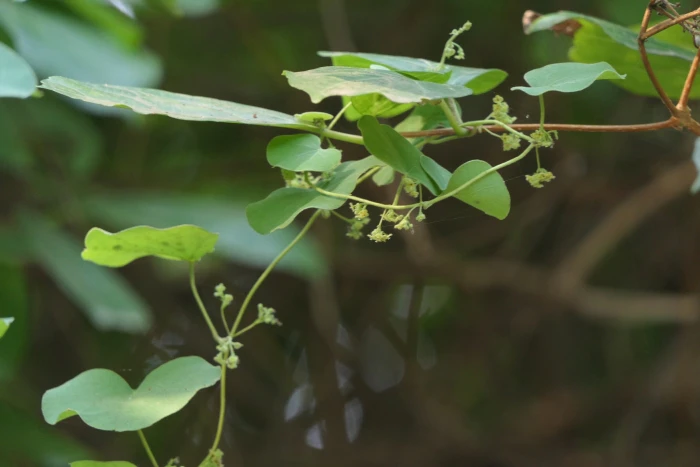Velvetleaf
(Cissampelos pareira)
Velvetleaf (Cissampelos pareira)
/
/

© Dinesh Valke
CC BY-SA 4.0
Image By:
© Dinesh Valke
Recorded By:
Copyright:
CC BY-SA 4.0
Copyright Notice:
Photo by: © Dinesh Valke | License Type: CC BY-SA 4.0 | License URL: http://creativecommons.org/licenses/by-sa/4.0/ | Uploader: dineshvalke | Publisher: iNaturalist |
























Estimated Native Range
Climate Requirements for Rochester, New Hampshire
| This Plant | Your Site | Plant Suitability for Your Location | ||
|---|---|---|---|---|
| • Precipitation | 6" - 275" | 44" | Aquatic | Aquatic |
| • High Temp. | 49°F - 108°F | 83°F | Your summer temperatures are normal for this plant. | Excellent |
| • Low Temp. | 6°F - 75°F | 11°F | Your winter temperatures are normal for this plant | Excellent |
This plant should grow well at your location with about N inches per year (Y minutes per month) of irrigation.
Summary
Cissampelos pareira, commonly known as velvetleaf or Abuta, is a perennial climbing vine native to tropical rainforests and areas with a monsoon climate in Central and South America, the Caribbean, and parts of Asia, including India. It is often found in the understory of forests, where it climbs on other vegetation to reach light. Velvetleaf typically exhibits slender, twining stems, heart-shaped peltate leaves that are soft and velvety to the touch, and small, inconspicuous greenish-yellow flowers that bloom in clusters. The plant is not particularly known for its ornamental value due to its modest appearance.
Velvetleaf is valued in traditional medicine for its wide range of purported therapeutic effects, including antimalarial and antiviral properties. It is used in Chinese and Ayurvedic medicine, as well as in Tamil Nadu under the name ponmusutai. In cultivation, it prefers moist, well-drained soils and partial to full shade conditions, mimicking its native understory habitat. It is propagated by seeds, which can be sown directly in situ. While it has medicinal uses, gardeners should be cautious as it can become invasive in suitable climates outside its native range, potentially outcompeting native flora.CC BY-SA 4.0
Velvetleaf is valued in traditional medicine for its wide range of purported therapeutic effects, including antimalarial and antiviral properties. It is used in Chinese and Ayurvedic medicine, as well as in Tamil Nadu under the name ponmusutai. In cultivation, it prefers moist, well-drained soils and partial to full shade conditions, mimicking its native understory habitat. It is propagated by seeds, which can be sown directly in situ. While it has medicinal uses, gardeners should be cautious as it can become invasive in suitable climates outside its native range, potentially outcompeting native flora.CC BY-SA 4.0
Plant Description
- Plant Type: Shrub, Vine
- Height: 6-12 feet
- Width: 3-6 feet
- Growth Rate: Slow, Moderate
- Flower Color: N/A
- Flowering Season: Summer, Fall
- Leaf Retention: Evergreen
Growth Requirements
- Sun: Full Shade
- Water: Medium
- Drainage: Medium, Fast
Common Uses
Bird Garden, Butterfly Garden, Low Maintenance
Natural Habitat
Native to tropical rainforests and areas with a monsoon climate in Central and South America, the Caribbean, and parts of Asia
Other Names
Common Names: Pareira, Abuta
Scientific Names: Cissampelos pareira, Chasmanthera strigosa, Chasmanthera strigosa, Cissampelos acuminata, Cissampelos argentea, Cissampelos auriculata, Cissampelos australis, Cissampelos benthamiana, Cissampelos caapeba
GBIF Accepted Name: Cissampelos pareira